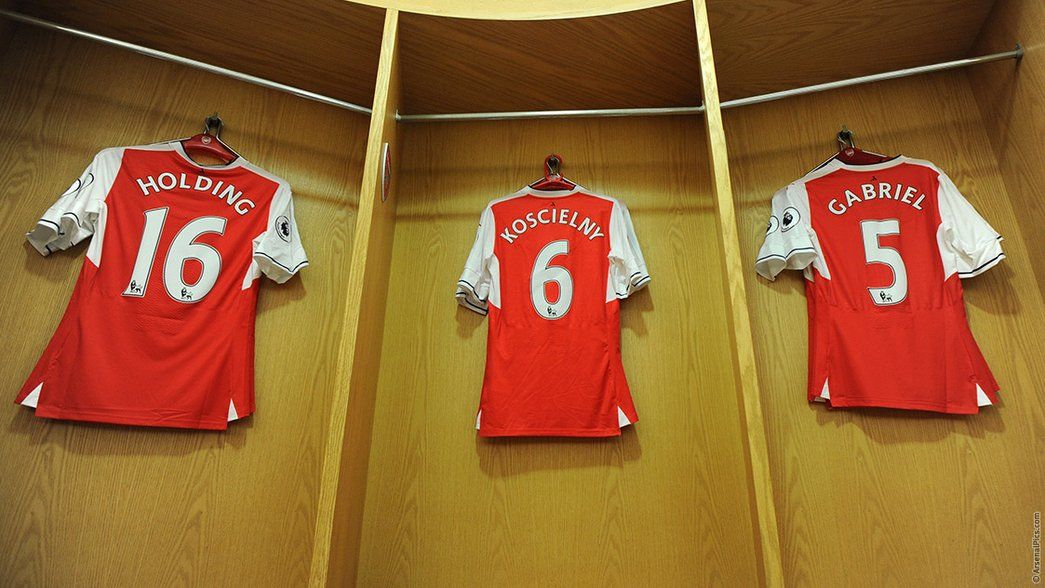Having gone 20 years and more than 1,000 matches without using a three-man defence, Arsene Wenger surprised everyone by switching to that system for the 2-1 victory at Middlesbrough last week.
That was followed with a 2-1 Emirates FA Cup semi-final victory over Manchester City with the same system, while Wednesday’s 1-0 win over Leicester also featured Arsenal using that system for the majority of the contest.
- Holding - Why a back three suits me
- Koscielny on playing in a three-man defence
- Why three at the back worked at Boro
It brings to mind the old saying about London buses – you wait ages for one, and then three come along at once. But the more the Gunners keep winning with that formation, the more Wenger will be inclined to use it.
One of his first moves as Arsenal manager back in 1996 was attempting to switch from the 3-5-2 they’d previously been using, and to the 4-4-2 system that Wenger would eventually depend upon for many years.
The players initially objected to that change, and the manager compromised and played 3-5-2 for the remainder of 1996/97. But the following season he insisted upon a four-man defence, Arsenal won the league, and not once has he returned to a back three - until now.
Today’s system is very different from the one used two decades ago, though. For a start it’s a 3-4-3 rather than a 3-5-2, and the nature of modern football, and the emphasis upon technical defenders, means the players in defensive positions are very different.
Back in the 1990s, the back three were simply centre backs, the wing-backs merely full-backs pushed forward. These days, however, it’s quite possible to play full-backs in the three-man defence, and wide midfielders as wing-backs, and therefore we’ve seen Nacho Monreal playing both left-centre-back and left-wing-back, and Alex Oxlade-Chamberlain dropping into a wing-back role.
Perhaps the most noticeable changes, however, have come from two centre-backs. One of the major beneficiaries of the system has been Gabriel, deployed in a right-sided centre-back role. This appears to suit the Brazilian’s game very effectively; he’s a naturally proactive defender who likes coming out of the backline to shut down opponents taking up deeper positions. In a four-man defence that means a large gap can often open up, but in a three-man defence he appears much more comfortable.
The difference is noticeable. Here is his heatmap from Wednesday’s win over Leicester:

Gabriel's heatmap against Leicester
It shows a significantly more advanced position than the last time he started as a right-sided centre-back, in the home victory over Crystal Palace in January:

Gabriel heatmap against Crystal Palace
The positioning of Laurent Koscielny has also been interesting. Whereas Koscielny plays roughly like Gabriel in a back four, always trying to nip in ahead of opponents and intercept the ball, he’s been switched to the free role between the other two centre-backs, which means he plays a calmer, more reserved sweeping role. Rather than moving forward into challenges, Koscielny has to drop off, assess the situation and provide the last line of defence.
He’s played that role effectively, and as the central defender also has most responsibility for distribution. His passing on Wednesday night shows great balance – he passes 22 times to Gabriel and 22 times to Monreal. Incidentally, these were Arsenal’s most frequent passing combinations of the game.

Laurent Koscielny's passing
On the left, meanwhile, Wenger has used Rob Holding, who isn’t naturally left-footed but has adapted well to that position, showing authority in possession and good positional sense too. He also has the mobility to cover the wide area.
Against Leicester, meanwhile, Monreal started there – and he’s arguably been the biggest hero of the three-man system. Indeed, in the space of two matches he’s played left-wing-back, then left-centre-back, and then his usual left-back position when Wenger switched to a four-man defence. He’s looked comfortable in all three roles, netted a fine volleyed equaliser against City and was responsible for Wednesday’s winner when his shot deflected in off Robert Huth.
It remains to be seen how long Arsenal continue using the three-man defence – the breakthrough against Leicester came after a switch to 4-2-3-1. But it’s another weapon in Wenger’s tactical armoury, and ahead of two huge games against Tottenham and Manchester United, the opposition will be left guessing about Arsenal’s system.
Copyright 2025 The Arsenal Football Club Limited. Permission to use quotations from this article is granted subject to appropriate credit being given to www.arsenal.com as the source.




